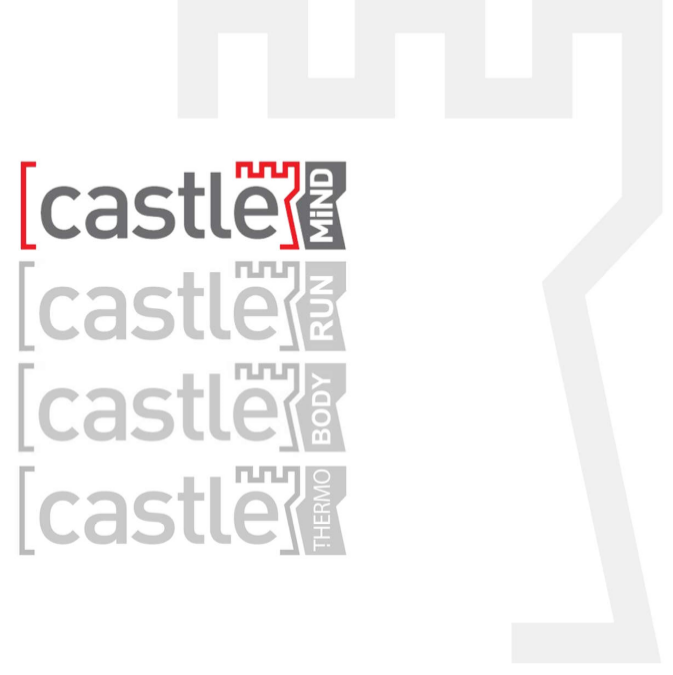The mission of Castle
In a previous post we told the story of Castle, describing how the project arose from the synergy between theory and practice. In this post it’s analyzed the modular structure of Castle, explaining why such an innovative solution was chosen for a software of simulation and design of die casting moulds.
When Castle started its development, there were already on the market many die casting process simulation software that were mostly used as an aid in the die casting process. However, it was the practical experience and knowledge of the foundry’s processes that led Castle’s developers to identify some critical issues in the existing tools and to offer innovative solutions to address the entire process from a new perspective.
At a technical level, the issues that have been identified involve two aspects: the timing of the analysis and the output of the simulation results.
Timing of analysis on die casting moulds
Usually, speaking of the timing of the analysis, software for the simulation of the die casting process can be used only once the mould and casting design has been done.
This is why the analysis is subsequent and delayed, since it is carried out when the mould is already in an advanced stage of its construction or defects have already emerged during production.
Since Castle developers are aware and have already experienced this way of use and this “bottleneck”, they’ve been led to create CastleMIND, a useful tool from the early stages of design.
Simulation results
The second issue that was identified is related to the results of the simulation. Simulation software usually employed for the simulation of the casting process with die casting moulds are tools that can be used with a wide range of technologies. For this reason, they do not consider some well-known phenomena that happens during the die casting process.
Once again Castle has a specific purpose, to create a definitive software for die casting technology and for die casting moulds, able to achieve results based on all the elements of the process.
A structure that becomes process
As previously said, Castle aims to solve these problems. Producers chose to organize the whole simulation process in modules, each of them dedicated to a specific aspect and moment of the die-casting process.
Thanks to the structure of the software, it’s possible to cut the process into different stages and to make all the people involved work together, in order to share results and processes of the production and the design stage.
In this way, the simulation software becomes both a tool for operational control, and a design tool able to give important information before the definition of the design of the mould. Therefore, the structure of the software becomes a working method, that is a hierarchy of activities and processes able to provide to the user systematic and schematic activities. In this way, the framework develops into a process and makes it possible to prevent issues throughout the production chain.
Here a short list of modules and their functionalities.
CastleMIND: thinking before designing
CastleMIND is the first module of the Castle suite. It’s a specialized system that evaluates the results of numerical calculations using practical criteria. It also provides easy and understandable suggestions and solutions. With CastleMIND you can:
- Analyze an existing casting or process configuration to find critical issues
- Start designing and setting up your production process
- Check your die casting machine utilization capabilities
- Calculate optimum tonnage, parameters, injection profile, piston and casting attachments
- Predict the risk of defects
The correct parameters implementation in CastleMIND makes it possible to increase process reliability, reduce scrap and time spent on subsequent simulations and increase the life of the mould by reducing wear.
CastleMIND also allows you to simulate and predict the behavior of a die casting mould during production, even without an existing 3D model. Indeed the software, thanks to the internal CAD, allows to detect and modify the geometry of the component and to optimize the layout of the mould. In this way you can firstly figure out and then start designing, evaluating all the possible scenarios before going ahead with the construction of the die casting moulds.
This is just a brief overview of CastleMIND’s features, to discover its full potential please refer to the dedicated section of the PiQ2 website.
CastleRUN: real-time optimization of casting channels
CastleRUN by PiQ2 is the first software for casting channel design and optimization. It is a proprietary technology developed especially for the die-casting process and made possible by PiQ2’s vertical specialization.
An inaccurate design of the sprue can compromise the quality of the workpiece and, for that reason, it is particularly important to optimize the geometry of the connections upstream of the mould construction, while it is still in the design phase. Consequently, it is possible to avoid the emergence of defects and critical issues during production.
CastleRUN can be used to control and optimize the shape and cross-section of shoot sleeves and runners. Therefore it’s a useful tool for die-casting to evaluate the behavior of the channels and to compare different solutions within a short time.
Again, please refer to the dedicated section on the PiQ2 website for more technical details on the operation and functionality of the module.
CastleBODY: the first biphasic simulation software
CastleBODY is the module of the Castle suite that allows you to simulate the filling of the mould, taking into account important factors that intervene during the production process. For further information, please refer to the product datasheet where you’ll find two important reasons why the software is different from all the other products offered by competitors: the hybrid mesh and the simulation of air behavior inside the mould.
Hybrid mesh
The hybrid mesh used by PiQ2 is the right solution between obtaining a grid as close as possible to the representation of the object you are working on and achieving high performance in terms of calculation speed. Regarding the PiQ2 Mesh, here we analyze two characteristics of the product with high added value:
- Refining zones: Thanks to the hybrid mesh of PiQ2 you can freely select the refining zones of the mesh by defining an independent refining level for each zone. This allows you to decrease the data processing time, since the software works mainly in the areas where it is most required
- Mesh structure: PiQ2’s hybrid mesh features has some structured prismatic internal meshes and some unstructured surface meshes. You can also achieve coarse meshes in thicker sections and thin meshes only in slim sections close to the surface. This feature makes it possible both to reduce the processing time of the results and to precisely reconstruct the geometry of the object
Simulation of air behavior inside the die
It has been defined CastleBODY, the first biphasic simulation software. Unlike the competition, PiQ2’s product is able to simulate the air behavior inside die casting moulds. Usually die casting process simulation software only analyzes the behavior of the metal, while PiQ2 software also takes into account the air remaining inside the mould.
Air is, in fact, a very important element in the process and causes a large number of flaws in the die-cast component; that’s why it’s fundamental to take care of it and to examine its behavior, in order to obtain accurate results from the undertaken simulation.
To see how the PiQ2 software allows you to analyze the distribution of fluids, metal and air within the mould, visit the PiQ2 YouTube Channel by clicking here.
CastleTHERMO
CastleTHERMO brings us to the end of this brief overview of the modules that make up the Castle suite. CastleTHERMO is the module designed for thermal simulation of the mould. The simulation is made by importing a 3D model of the mould that represents its components (dies and mould holder), cooling channels and casting. Furthermore, the production cycle is split into six macro phases that enable you to carefully analyze what happens during the process. once again, PiQ2 offers more useful innovations than what the competition can provide.
CastleTHERMO allows you to perform simulations that take into account the presence of different materials (for example in case of co-moulding), and to consider the presence of different cooling fluids and to look at both real and virtual channels. Since the simulation aims to define the right sizing of the channels and the control of the thermoregulation, it’s fundamental to represent what’s happening inside the cooling channels. CastleTHERMO is able to provide this result in a simple and easy way, using the same parameters as the foundry.
To deepen your knowledge of CastleTHERMO, you can read the product datasheet, which can be found here.
Conclusion: how to optimize tools and processes with Castle by PiQ2
In this brief overview Castle suite modules have been analyzed and we explored the most innovative features of the software. In conclusion, it is worth mentioning one last feature that makes PiQ2’s product unique among the simulation software for die casting moulds and the die-casting process, the ease of use.
As already told in the post Die-casting Simulation Software: Castle by PiQ2, PiQ2 has the aim to combine the results of the research with the experienced know-how, in order to offer to foundries a product that can be used by several people at different levels.
For this reason, Castle has been designed to be as intuitive and easy to use as possible: from data entry to reading the results through the modification of parameters, that’s how Caste works. It is also for this reason that a simulation process structured in modules relative to single phases of the process is able to turn itself into method: method of job, of planning and last but not least, a new way of thinking.

